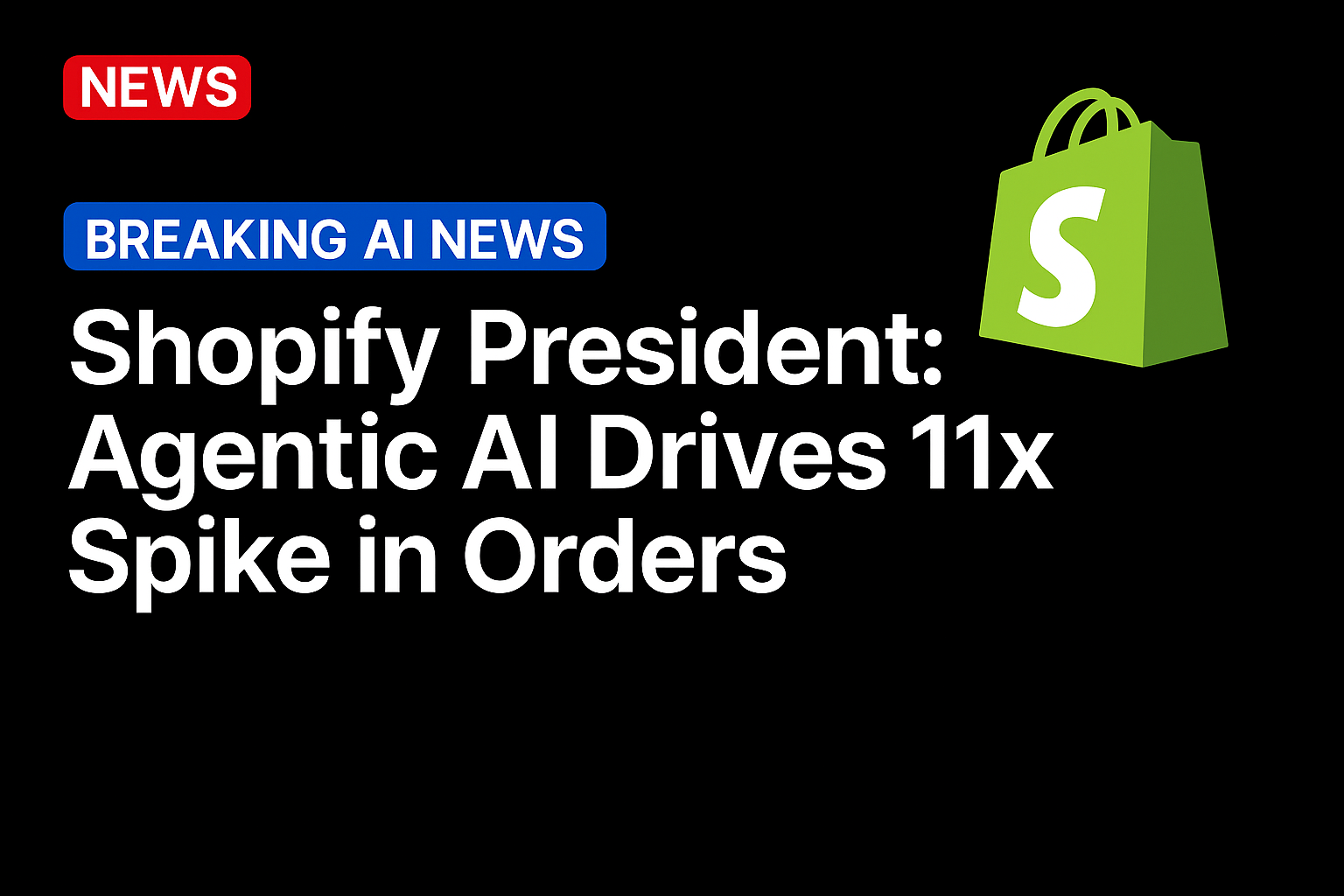
Shopify put agentic artificial intelligence (AI) and the Prompt Economy™ at the center of its strategy on its Nov. 4 earnings call, arguing that it will reshape how consumers shop, and is already having an impact.
“AI is not just a feature at Shopify. It is central to our engine that powers everything we build,” President Harley Finkelstein told analysts.
Finkelstein said the shift is already visible. “Since January, we’ve seen AI‑driven traffic to Shopify stores up 7x, and … orders attributed to AI searches up 11x,” adding that a Shopify survey found 64% of shoppers expect to use AI during the holiday season.
Shopify’s “commerce for agents” stack, which includes data, universal shopping cart and universal checkout, is in full affect. It is designed to let ChatGPT, Microsoft Copilot and Perplexity route discovery and purchases directly inside conversations, with Shop Pay handling one‑click checkout.
In the quarter, Shop Pay processed about $29 billion of gross merchandise volume (GMV), up 67% year over year, and payments penetration reached 65% of GMV, Finkelstein said.
Beyond checkout, Shopify sees agentic tools touching the whole customer journey from discovery, to purchase and post‑purchase status, returns and reorders so merchants “are prepared for whatever path wins,” Finkelstein said.
Inside the company, Shopify’s Sidekick assistant is also becoming routine: More than 750,000 shops used it for the first time in Q3, driving nearly 100 million conversations to help with tasks from analytics to SEO.
“This is not just about automation. This is also about autonomy,” he said.
On the consumer, the company said demand remains resilient. “Consumer confidence for us is measured at checkout,” Finkelstein said. “On Shopify, shoppers keep buying. They keep returning and demand remains really resilient across channels and in categories.”
Europe was a standout, and cross‑border GMV held at 15% of total, CFO Jeff Hoffmeister noted. Since U.S. tariff actions this spring, some merchants raised prices, but the pace of price increases ticked down versus last quarter; U.S. inbound and outbound flows stayed “relatively steady.”
Looking to the balance of the year, Shopify guided fourth‑quarter revenue growth to the mid- to high 20 percent year over year, with gross profit dollars growing in the low‑to‑mid 20s. Operating expenses are expected at 30% to 31% of revenue, and stock‑based compensation at about $130 million. Free cash flow margin should land slightly above Q3, even as payments loss rates trend down. Foreign exchange should be a modest tailwind versus Q3. After settling its convertible on Nov. 2, Shopify estimates it had roughly $6 billion of cash and marketable securities and no debt on a pro‑forma basis.
Top line, Q3 showed broad strength. Revenue rose 32% to $2.84 billion, GMV climbed 32% to $92 billion, operating income was $343 million and net income was $264 million. Free cash flow came in at $507 million, an 18% margin — marking nine straight quarters of double‑digit free‑cash‑flow margins. Monthly recurring revenue reached $193 million.
“We build. We ship. We grow,” Finkelstein said, highlighting merchant wins from startups to global brands and noting that a new entrepreneur makes a first sale on Shopify every 26 seconds. Shopify says it now supports “millions of businesses” across more than 175 countries.
The through line of the quarter is that AI is moving commerce from keyword search to conversation, with software agents doing more of the work. If those agents surface the brands shoppers already love, and merchants can convert quickly with Shop Pay and embedded checkout, Shopify’s take is simple: As merchants make more money in new AI‑driven channels, so will Shopify.
Source: https://www.pymnts.com/




